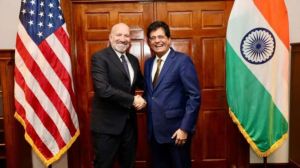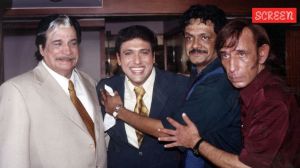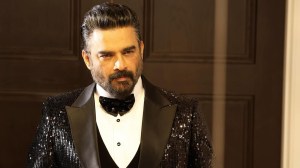‘Forty per cent deaths occur in the first 28 days of life
Kris Olson is bringing simple medical technology to impoverished areas

Kris Olson is bringing simple medical technology to impoverished areas
When Kris Olson was an undergrad, he took a year off from school to see the world. He wanted to let chance decide his fate, so he wrote Asia on one slip of paper, South America on another, and Africa on the third, crumpled them up in a hat, and picked one. Fate chose Asia.
Olson travelled extensively all over the continent, but it left him with an uneasy feeling. “I felt like a voyeur,” he remembered. “You see poverty all around you, and I had nothing really to offer them.”
Two decades later, Olson has something to offer them: he is bringing relatively simple medical technology to impoverished areas where it can lead to “easy wins”. As the programme leader for the Global Health Initiative at the Center for Integration of Medicine and Technology—a nonprofit consortium of teaching hospitals and engineering schools—the boyish 38-year-old has become, in the words of a colleague, “The Man when it comes to medical technology for developing countries.”
Olson, who spends half his time abroad—he has worked in Burma, Thailand and Darfur—and the other half as a paediatrician and internist at Massachusetts General Hospital, specialises in neonatal care, which he calls a blind spot in global health. “Almost 40 per cent of deaths happen in the first 28 days of life, and they are unseen deaths, buried in the backyard, accepted deaths. But in a lot of cases, they just needed to be given a breath,” and they would have lived, he said.
Working with the programme, Olson did two things: he found a $7 alternative to the $50 “bag mask valve” device used in Western hospitals to provide ventilation to a person who is not breathing properly. And he created a programme to train 330 midwives in Aceh, on the northern tip of Sumatra, how to use it.
When he returned to the area after the initial training, he was shocked at the reception. “All these midwives met me at my float plane to tell me how many babies they’d saved. One of them kept saying ‘lima, lima’, which means five. She was saying she’d saved five babies.” The $7 device he provided the midwives is little more than a plastic tube with a tiny mask at one end. “You put it over their mouth and blow. That’s it,” he said as his voice took on a hint of emotion.
Two years ago, Olson’s wife gave birth to triplets. It was a tricky birth, he says, and “my children probably would have died if they’d been born where 98 per cent of children are born in this world. But with this,” he said as he fingered the device, “three or four breaths and most babies are screaming and back to their mother.”
His latest project is the car-parts incubator. “Sometimes I sit here and think, ‘This is such a fun, satisfying way to practice medicine. I can’t believe it’s available to me,”’ he said. “But the other side is always: ‘How much more can I do?”’
_BILLY BAKER,NYT





- 01
- 02
- 03
- 04
- 05


























